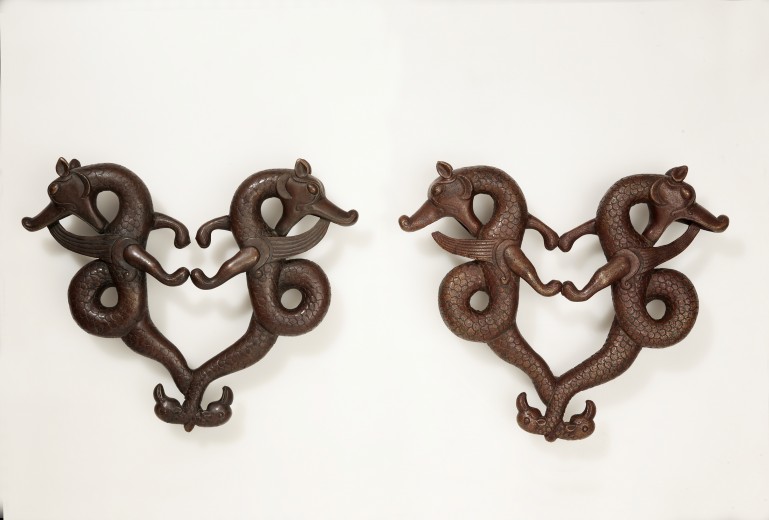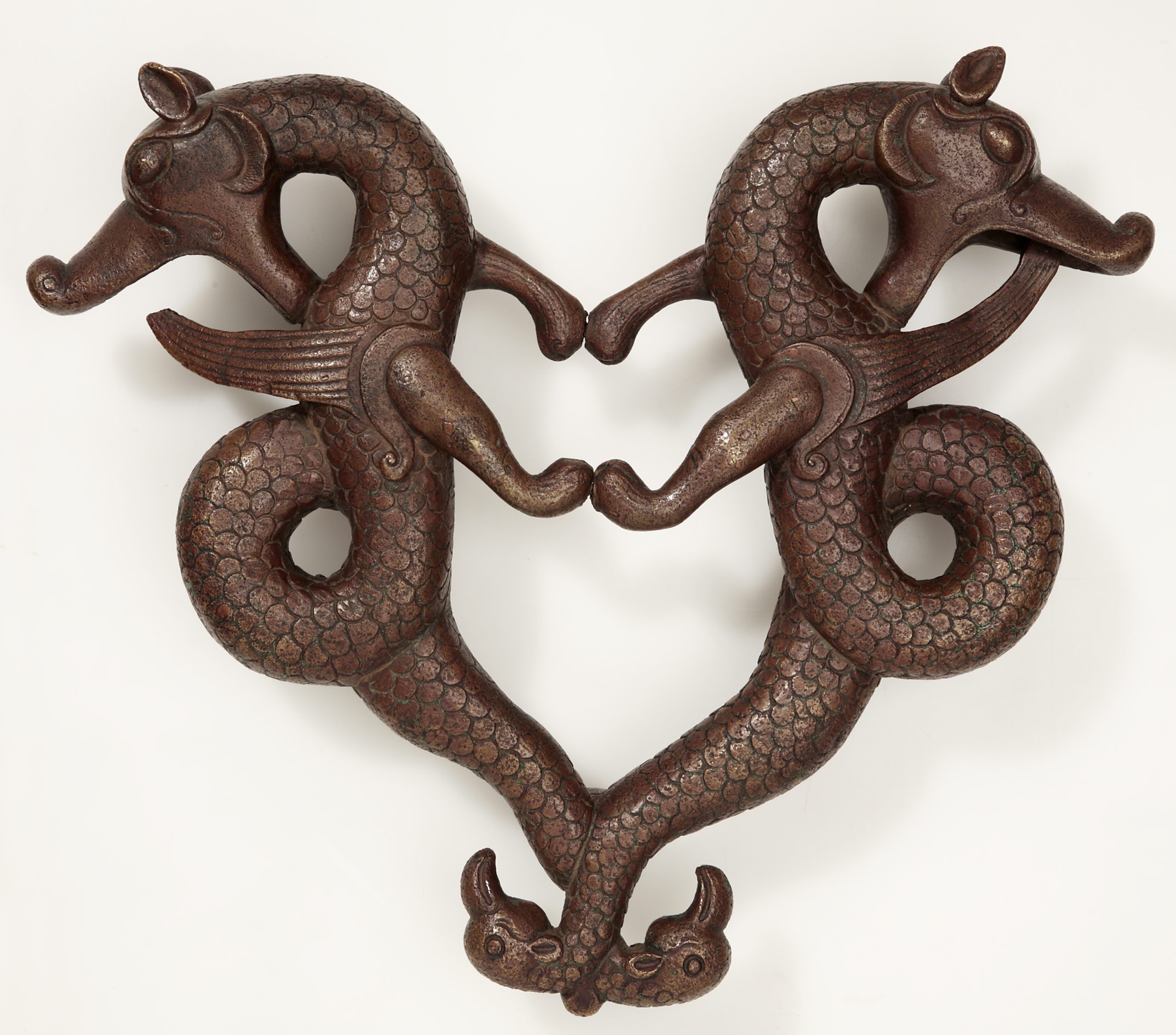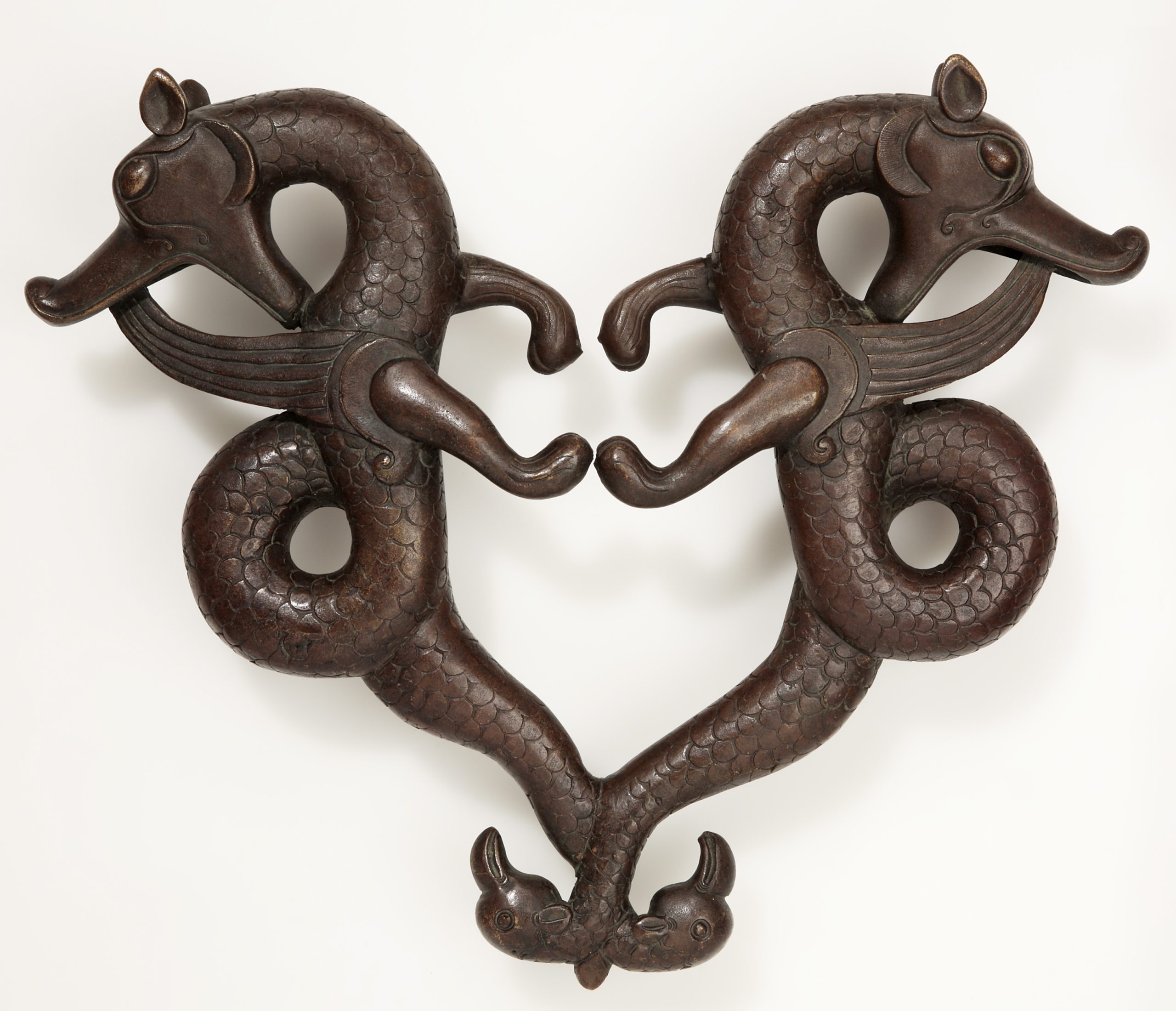 Print Page
Print Page
 Print Page
Print Page
Location: northern Mesopotamia (now south-east Turkey)
Materials: quaternary copper alloy, cast and engraved
Dimensions: 33.7 x 39.5cm; 33.5 x 40.5cm
Accession Number: MTW 1407, MTW 1428
Other Notes:
The door handles are in the form of winged dragons back-to-back, their scaly bodies knotted and terminating in gryphons’ heads. They have no hind legs. Such figures are often described as door-knockers but the two loops securing them to a door would have made them immovable. Yet even movable handles on mosque doors in 12th- to 14th-century Syria and Egypt are often up to three metres from the ground and so must have been for show only. The present handles derive from a design of the early 13th-century engineer al-Jazari, who cast the knockers of the Artuqid palace at Diyarbekir (Topkapi Saray Library A 3472, folios 169a–b), although in his drawing the dragons are shown confronted and without knotted tails. The dragons’ knotted tails may be an allusion to a pseudo-planet, Jawzahr, which was invoked by Muslim astronomers to explain eclipses of the moon. They may also derive from the entwined serpents of Aesculapius in the eastern Hellenistic world. In Iraq and the Jazira, they also decorated the arched gates of cities or fortresses, like the Talisman Gate at Baghdad (618 AH/ 1221 AD, no longer extant), the Aleppo Gate at Diyarbekir (589 AH/ 1183–4 AD), and the gate of the Citadel of Aleppo (606 AH/ 1209–10 AD).
Bibliography:
J.M. Rogers, The Arts of Islam. Masterpieces from the Khalili Collection, London 2010, cat.112, p.102.


